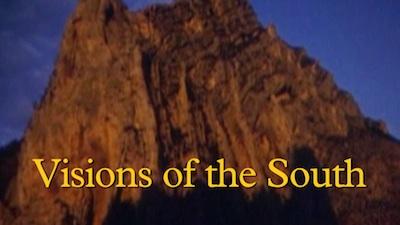When you enter the exhibition Visions of the South, you will notice—among the colorful paintings, expressive prints, dramatic photographs, and delicate drawings—a flat screen showing a short film that complements the exhibition. Since the “south” can evoke so many different things, we wanted to give a voice to artists and writers who were fascinated by it.
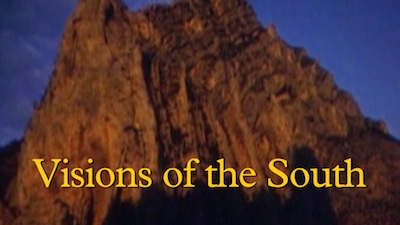 From Visions of the South © Frauke Josenhans & Alexa Oona Schulz
From Visions of the South © Frauke Josenhans & Alexa Oona Schulz
The notion of the south has inspired some of the greatest writers, among them the German poet, novelist, scientist, and art amateur Johann Wolfgang von Goethe (1749–1832). His vision of the south related largely to Italy—as was the case for most of his contemporaries. The Italian peninsula was considered a sort of Arcadia, an ideal land with beautiful nature and remains from antiquity. Going there was considered almost a duty for artists, writers, and noblemen alike. In 1786, Goethe, at the apogee of his success, and seeking to escape the pressures of court life in Weimar, decided to finally visit Italy to find new inspiration there. After arriving in Rome, Goethe wrote: “Yes, I have finally arrived in this city, the capital of the world! . . . My desire to reach Rome was so great and increased so much with every passing moment that I could no longer stay anywhere, and stopped in Florence for only three hours.”
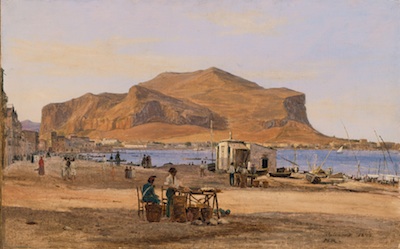 Martinus Rørbye, Palermo Harbor with a View of Monte Pellegrino, 1840, gift of the 1990 Collectors Committee
Martinus Rørbye, Palermo Harbor with a View of Monte Pellegrino, 1840, gift of the 1990 Collectors Committee
After spending months in Rome, visiting the famous monuments and sites, Goethe travelled further south, first to Naples, then to Sicily. There, he was taken by the beauty of the Sicilian coast: “No words can describe the misty transparency that hovered around the coasts as we sailed up to Palermo on the most beautiful afternoon: the purity of the contours, the general softness, the distinctness of the tones, the harmony of sky, sea, and earth. To have seen it is to remember it for the rest of one’s life.”
Some 100 years later, the Scottish poet Robert Louis Stevenson (1850–1894) found his “south” in France, more specifically in Provence: “My first impression was on rising at Orange and throwing open the shutters. Such a great living flood of sunshine poured in upon me, that I confessed to having danced and expressed my satisfaction aloud. . . . I hope this time to send you a weekly dose of sunshine from the south, instead of the jet of snell Edinburgh east wind that used to was.”
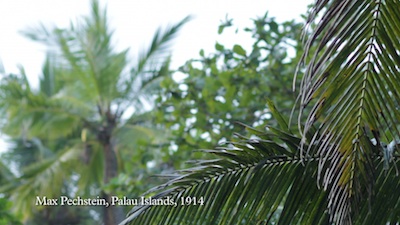 From Visions of the South © Alexa Oona Schulz
From Visions of the South © Alexa Oona Schulz
In the early 20th century, the south could have referred to Italy or Provence, but the term also applied to faraway regions in the Pacific. In 1914, the German painter Max Pechstein travelled to Palau Island, where he found inspiration in the luxurious nature there. In his book Memories, published several decades later, he recalled his experience: “One day followed another in calm and serenity. There was nothing to disturb my soul’s peace. Whether I observed the Palau people while carving, fishing, hunting, or at rest, my pencil always captured their convivial life. After I had found this paradise, I really hoped never to have to return to Europe. Nature in unheard of splendor surrounded me, abundantly luxuriant growth everywhere, unknown plants in proliferation: palms and breadfruit trees, bamboo, and sugar cane.”
A more in-depth representation of Max Pechstein’s work soon can be seen in the exhibition Expressionism in Germany and France: From Van Gogh to Kandinsky, opening on June 8 at LACMA.
Modern artists László Moholy-Nagy and Nicolas de Staël were captivated by the strong southern light in Provence and the vivacious life in the port of Marseille. This prompted Moholy-Nagy to shot a film there, Impressions from the Old Port of Marseille ( France, 1929), excerpts of which can be seen in the Visions of the South film. Nicolas de Staël wrote in many of his letters how the light in Southern France changed his perception of color.
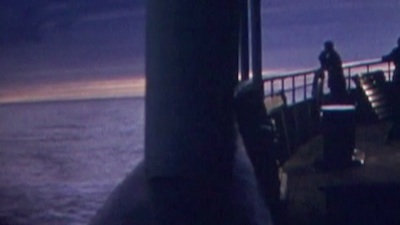 From Visions of the South © Frauke Josenhans & Alexa Oona Schulz
From Visions of the South © Frauke Josenhans & Alexa Oona Schulz
Next to these testimonies of famous artists and writers, we also found anonymous voices, who were equally bewitched by the beauty of the south. The images we used to create the film are excerpts from home movies—travelogues—filmed in Super 8 format by Americans traveling the South of Europe, as well as the tropics, in the 1950s and 60s. Just as the painters and poets, they were fascinated by the light, beautiful colors, architecture, and landscapes of southern destinations. With their old-fashioned Super 8 cameras, which have recently experienced a strong comeback in the world of filmmaking, our nameless travelers banned on celluloid glimpses of a southern paradise they wanted to hold on to and bring home to share with families, friends, and maybe even us, viewers in the distant future, excited to encounter their exquisite film footage half a century later.
Experience for yourself how all these visual and oral testimonies evoke the different faces of the “south” and share your own vision with us.
Frauke Josenhans, Curatorial Assistant, Robert Gore Rifkind Center for German Expressionist Studies
Alexa Oona Schulz, Multimedia Producer and Film Director



